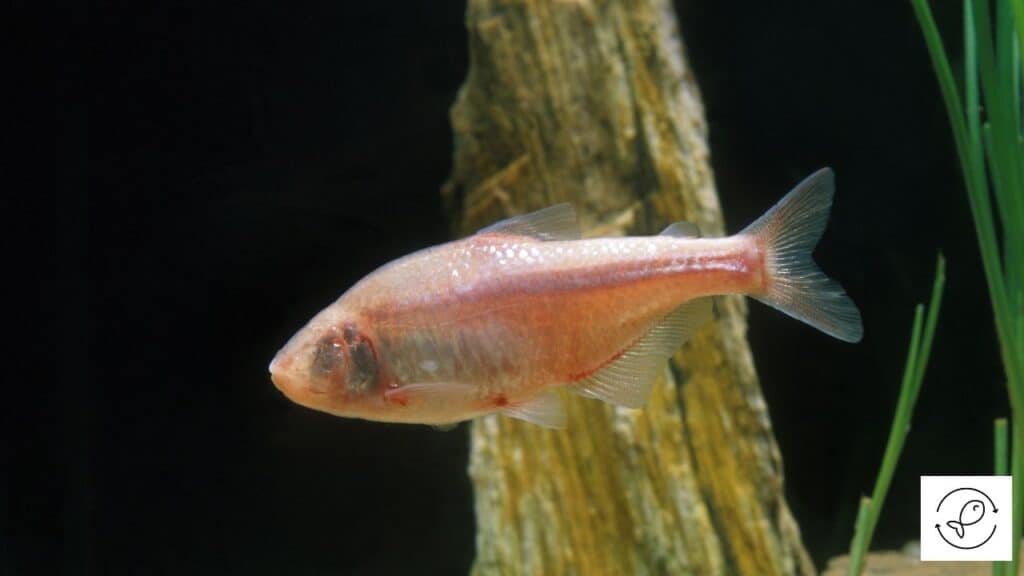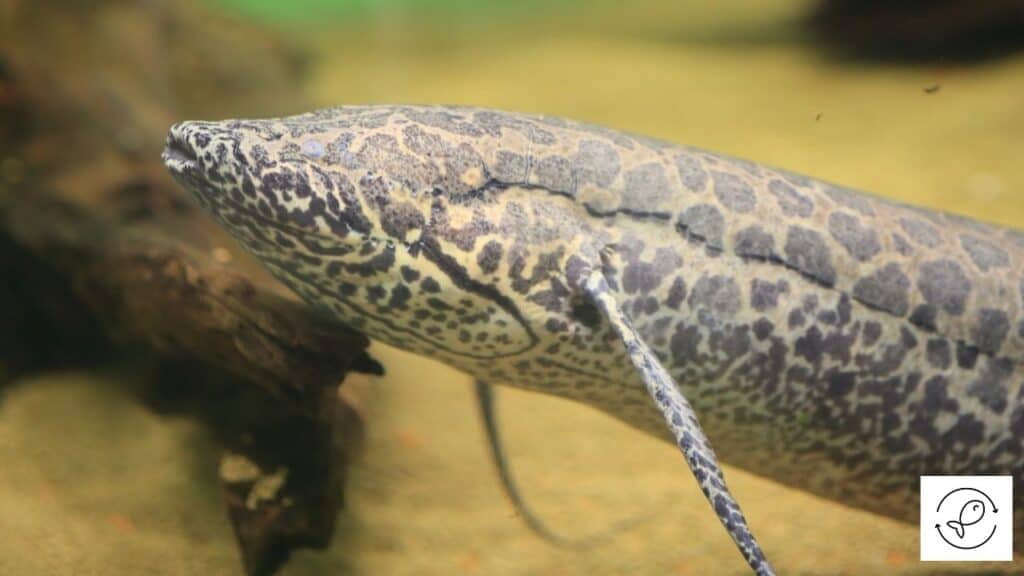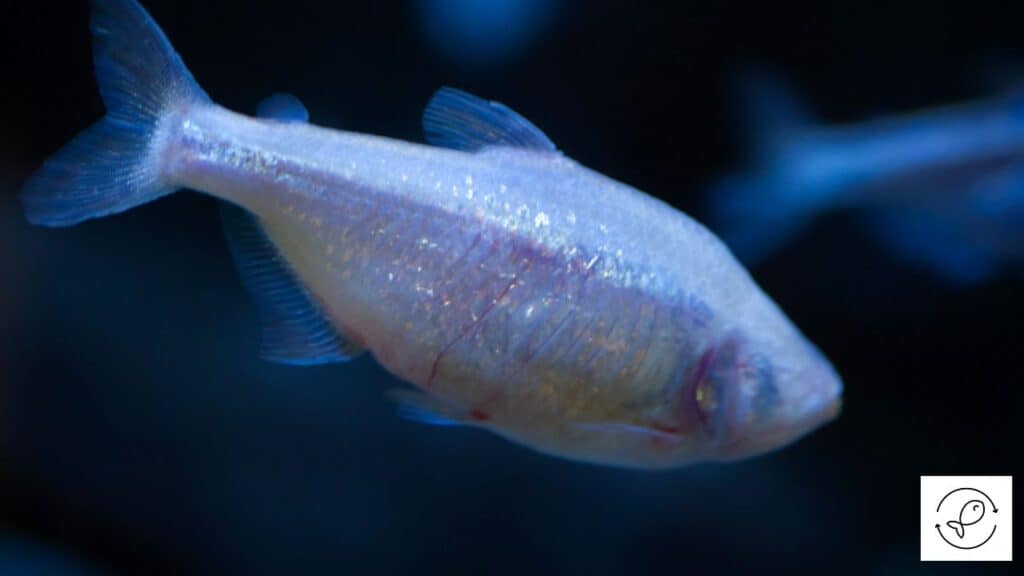Fish are aquatic creatures, but some fish species have adapted to live underground.
These fish are found in underwater caves and aquifers, where they survive with little light or oxygen.
They typically feed on small invertebrates and organic matter that gets washed into their subterranean habitats.
Let’s learn more about some of the fish that live underground.
Gollum Snakehead
Check out what this fish looks like over here.
Gollum snakehead is the eighth species of subterranean fish endemic to the underground aquifers of Kerala in southern India.
It was discovered due to the 2018 Kerala floods when numerous underground animals got washed out of their aquifer habitats into a paddy field in Oorakam.
This fish was photographed by a local villager who posted it on social media and got instant recognition.
Gollum snakeheads are highly distinctive compared to other snakehead fish.
Most of the characteristics found in subterranean fish aren’t present in gollum snakeheads.
For example, many snakehead species have bright coloration, which is lacking in gollum snakeheads.
Gollum snakeheads have elongated, eel-like body that is mainly brown and beige in color.
Another difference is that snakeheads aren’t adapted to live in underground habitats.
In contrast, gollum snakeheads are believed to live underground.
Ralf Britz, a researcher at the National History Museum, has stated in his research that gollum snakeheads may have lost their ability to maintain buoyancy in the water or have lost their swim bladder.
Hence, they are more suited to an underground lifestyle.
Dragon Snakehead
Check out what this fish looks like over here.
Dragon snakeheads are a new underground fish species found by researchers.
Dragon snakeheads are another eel-like fish primarily restricted to the subterranean habitats in southwest India, namely in the Western Ghats foothills of Kerala.
Like gollum snakeheads, dragon snakeheads also display unique traits that distinguish them from the true snakeheads in the family Channidae.
Dragon snakeheads have long, slender bodies with long anal fins and numerous scales.
They have shortened swim bladders and fewer vertebrae with ribs, which makes them less specialized than regular snakeheads.
In addition, they also lack the ability to maintain buoyancy, resulting in them adapting to underground habitats.
These primitive fish are living fossil that reminds of a dragon.
They mainly dwell in porous rock aquifers and only come to the surface after floods due to heavy rains.
Both gollum and dragon snakeheads are considered relict species due to their unique nature and restricted habitats.
Cavefish

Cavefish are a type of fish that live in underground habitats or caves.
They have adapted to live in dark, low-oxygen environments and have evolved unique characteristics such as reduced eyesight and the ability to survive without food for long periods.
More than 200 cavefish species are found worldwide, except in Antarctica.
Most of the cavefish species are endemic to the tropics or subtropics.
Most cavefish species are tiny fish reaching up to a maximum of 5.1 inches in length, with only three species growing larger up to 17 inches.
Their low metabolic rate enables them to survive prolonged periods of starvation.
Other adaptations found in cavefish are their smaller eyes and less pigmented skin than their surface-dwelling counterparts.
Most cavefish species are confined to underground lakes, pools, or streams within actual caves.
Still, some are also found in aquifers and are only detected once artificial wells are drilled into these layers.
West African Lungfish

West African lungfish are another fish species that primarily bury within riverbeds.
They bury themselves underground and can stay alive for numerous months in a burrow of hardened mud underneath a dried stream.
West African lungfish have made biological adaptations to survive in challenging environments without food or water during a long period of dormancy.
They have developed primitive lungs for survival and the capacity to go into estivation, similar to hibernation.
Besides, they also excrete a mucus cocoon and digest their own muscle tissue for nutrition.
Their slow metabolism enables them to survive in underground habitats for long periods.
Phreatobius cisternarum
Phreatobius cisternarum is a catfish species belonging to the Phreatobius genus.
This Brazilian fish lives underground in phreatic habitats.
These fish primarily inhabit the underground habitats, from north to south of the Amazon River and Marajo Island.
They prefer shallow, phreatic places to reside but don’t live deep within artesian aquifers.
Phreatobius cisternarum fish have a distinct appearance. The head of these fish is wider than their bodies.
Generally, their body and head are uniformly red due to the superficial blood, but the fins aren’t red.
These fish aren’t very active.
It’s also one of the reasons that they can survive prolonged periods of starvation due to food scarcity in their habitat.
Under extreme conditions, these fish demonstrate a form of respiration that involves breathing air.
It’s believed that they can also use cutaneous respiration due to their tiny size, living conditions with low oxygen levels, and high blood circulation to the skin that causes red coloration.
Kryptoglanis shajii
Check out what this fish looks like over here.
Kryptoglanis shajii fish are a species of subterranean catfish found in the subsurface waters of the Western Ghats in Kerala, India.
This fish is tiny, growing up to 2.3 inches.
Due to its unique characteristics, it’s currently the only known member of its family and genus.
A defining feature of Kryptoglanis shajii fish is their skeletal structure which features a bulging lower jaw, like that of a bulldog.
They are a great mystery for scientists who are researching them.
Although these fish look similar to catfish from the outside, their internal organs are quite different.
As per a study, these fish miss several bony elements present in other catfish species.
They also lack dorsal fins and spines in any fins.
They have an anal fin that is completely confluent with the caudal fin, four pairs of barbels, and an upwardly directed mouth.
Due to these distinctions, these fish have been placed in their own family.
Despite living underground, these fish can be found in wells, springs, and flooded rice paddies from time to time.

